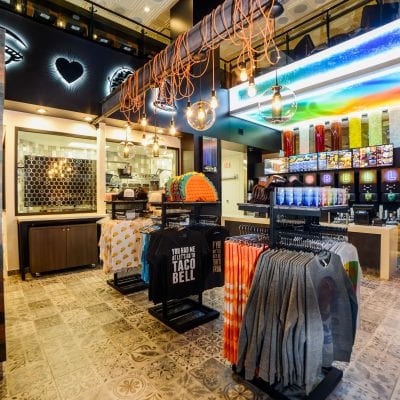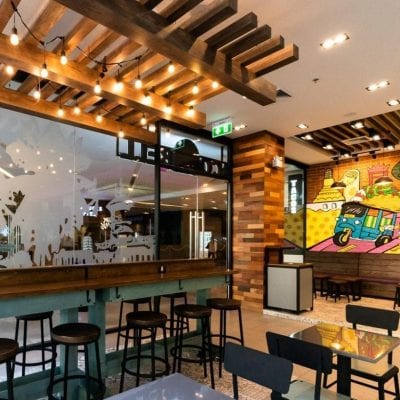Christina L. Hernández on Building Creativity and Connection in Practice
Alumna Christina L. Hernández (BArch ’04) is the Global Manager of Architecture, Design & Development for Taco Bell. She has over 18 years of experience in residential, commercial, restaurant and retail design. Hernández’s background includes work on all phases of development from initial concept to completion. We recently caught up with Christina to discuss her personal career path, how she builds brands through creativity, and designing for human connection.
Interview with Christina L. Hernández
 Q: Why did you choose to study architecture?
Q: Why did you choose to study architecture?
There are a few reasons why I studied architecture. First, I have always loved to draw; I was inherently good at it when I was little – any present I got or anything I asked my parents to buy me was art or drawing related. There’s something to be said about bringing an empty canvas to life through color and lines which satisfied my need for creativity from a young age. Secondly, my Dad was an architect [now retired]. Growing up looking at his drawings and talking about the transition from a sketch to a built form was fascinating to me; I was curious about the process of thought becoming reality. More simply, I wanted to grow up to be just like him.
I knew I had a passion for architecture & design, and I knew that going into this field would combine all of my passions, from the fundamentals of building, to understanding the complexities of the architect’s role and studying how to create these amazing structures that are not only enjoyed by the public but also have function and human interaction.
After my many years of schooling, I have now truly found my niche, designing spaces and creating sensory experiences for the retail customer. My professional experience has led me to deeply understand the balance of both customer and brand. My hope is that my creativity, insight, and consumer connection help brands to accelerate meaningful, relevant expansion with a clear humanistic connection.
Q: You’re the Global Manager of Architecture, Design & Development for Taco Bell, and you have a background in residential design. How does your background inform your current role?
The beauty of architecture is its functionality. I began my career thinking that I wanted to do residential design, but then realized that architecture opened the door to so much more. I found myself transitioning to Retail and Commercial design after the recession, and I loved the idea of being able to design a space that can be experienced by many. In residential design, I learned to listen to the homeowner, trying to decipher between their wants and needs while maintaining my own aesthetic. The foundation for residential and commercial design is fairly the same: working with a client, working around jurisdictional requirements and building codes, etc. The main difference in design scope is largely based on needs. For commercial design, the design inspiration comes from the corporate brand image, and the design constraints are often tied to functional space limitations and commercial building code requirements. There is still a distinctive, personalized aim in commercial projects, but it often involves different textures, colors, and layouts than would be found in many residential settings.
Q: Architects often face questions of narrowing project scopes. With changes in climate, technology, and construction techniques, how do you think architects and designers will adapt ways of practicing to advance the profession?
Architecture is constantly changing and so must we. Our diversity, our experiences and our training provide architects and designers the tools to solve complex issues with innovative solutions. We need to stay educated with new technologies and construction techniques, and understand the climate that affects our environments so that we can ultimately design for the informed end-users of our curated spaces.
Q: What projects have you enjoyed working on most?
In my current role at Taco Bell, I have enjoyed working on projects that push the boundary on industry standards for QSRs [Quick Service Restaurant] – From incorporating wedding venues in a restaurant to stadium seating to dynamic walls and ceilings, we like to think outside the box. For me, being an architect is being creative. It gives me the opportunity to draw, whether digitally or putting pen to paper; to imagine spaces three-dimensionally, and then see that vision come to life.
Q: What advice would you give to students and designers who aspire to follow a similar career path?
Without sounding cliché, “do what you love” – if you have a passion for architecture and design, be relentless in your search for knowledge. I think getting out of your wheelhouse is important as well by not playing it safe in taking risks in order to learn and grow. Stay relevant by being open to learning about new concepts and trends. Remember that listening and learning from your mistakes and from your peers will keep you on your toes, so do not shut yourself off from hearing other perspectives… it might just unlock an idea or enhance a thought.
Q: What three words would you use to describe Woodbury?
Collaborative. Forward Thinking. Innovative.

